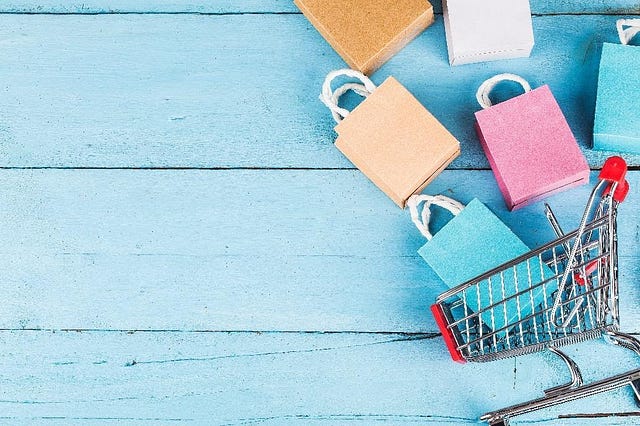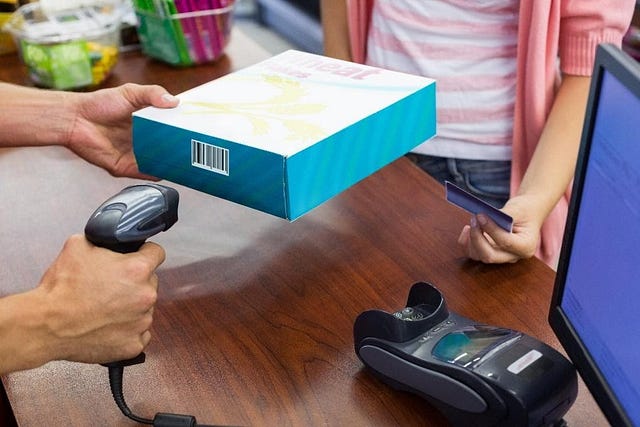Breaking into the major retail chains to sell products and grow business is something many product manufacturers aspire for. Bringing products into the retail sector through modern trade retailers can be a fantastic strategy for business growth. It helps to boost product revenue, build brand awareness and improve the kind of network connections you need to successfully grow a wholesale distribution business. It also does wonders for the health of your business as a whole.
However, it is also very difficult to introduce new products in retail shops, as retail chains have limited space to fit new products in their retail stores. But with some basic principles, you can pave your way into getting your products into your targeted retail store, which help you reach out to the right audience and enhance your business.

We have carved out some basic steps on how you can easily and strategically connect with big retail chains to sell your products
Let’s Start…
Step 1 — The first step is to decide what retail chains you will target because many retail chains will only add products that “add value to their catalogue by reflecting its style and image.” It would be better if one goes to a shop where they have a good acquaintance with the owner.
Study and absorb the process to get a better understanding of buying cycles, regional and nationwide buyer information, customer preferences, etc.
Step 2- Browse through retail stores to see what products they carry and whether they stock products similar to yours or not, and then decide on the wholesale price you need to achieve to make a profit to sell products.

But also keep in mind that discount retail chains may offer high volume, but usually at the expense of a very small profit margin. To decide the best approach, first determine how much money you need to make on each item.
Step 3- It is very important today to have barcodes on your products because that makes the process transparent and helps to sell them easily through retailers. Barcodes are used to encode product numbers, serial numbers, and batch numbers. This, ideally, plays a key role in supply chains, allowing parties such as distributors, suppliers, transportation providers to track goods as they pass across the supply chain.
GS1 standards help you identify what matters in a world of growing data. Through correctly defining, accurately recording and automatically exchanging critical information about goods, locations, properties and more, GS1 principles establish a common business base.

Enterprises can also combine various GS1 standards to streamline business processes like traceability. It also enables manufacturers to meet retail industry requirements.
Link of the video- https://www.youtube.com/watch?v=FHGNRWHS2Yc
Learn 10 steps to barcode your products.
Link for the YouTube video- https://www.youtube.com/watch?v=efl9zxxf5Sk&t=2s
Step 4- Research the vendor application process for the retail chain you want to approach. For example, Walmart has an online proposal submission process for all vendors. Similarly, big retail chains like Big Bazaar and Reliance use an online application process for vendors so that they can easily receive information from them in their desired format.
Step 5- Contact the category manager or buyer at the chain who takes care of your product category. Gain knowledge of processes related to new products and procedures they use. Invest depending on the retail shelf you like, because there’s a price differential when you place your items at the store’s prime spot.
Step 6- Make a presentation and tailor each presentation to the particular chain and industry. Include a sample of your product and packaging, a brochure, a price list, evidence of your ability to manufacture in large quantities and any marketing or promotional plans that you have for your company that will promote its sale.
At last, it all comes down to making a decent proposal, and then all of the above steps fall into places.
Ability to recognize your target customers, and accordingly, the suitable stores, are the foundation of a large customer base. Always make sure to be realistic in your approach, master the perfect pitch and you will successfully sell your products into various retail chains soon.
I want to share a testimony on how mr benjamin helped me with loan of 2,000,000.00 USD to finance my marijuana farm project , I'm very grateful and i promised to share this legit funding company to anyone looking for way to expand his or her business project.the company is funding company. Anyone seeking for finance support should contact them on 247officedept@gmail.com Mr Benjamin is also on whatsapp +1-989-394-3740 to make things easy for any applicant.
ReplyDelete